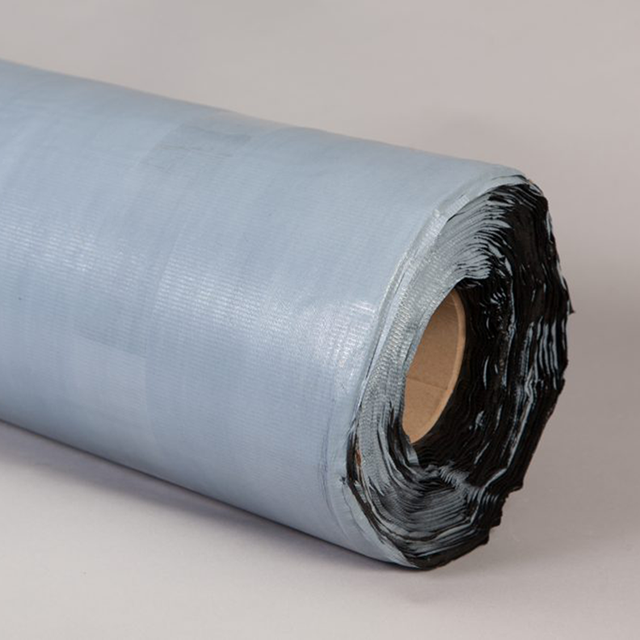Views: 0 Author: Site Editor Publish Time: 2025-03-21 Origin: Site







How long can PVC membranes protect your building? Their lifespan is crucial for both waterproofing and roofing.
In this post, we’ll explore how long PVC membranes last, the factors that influence their durability, and why maintaining them is essential. You’ll also learn how to maximize their lifespan and when to consider replacement.
PVC membranes typically last between 20 to 30 years, depending on the installation and maintenance. In some cases, higher-quality PVC can last up to 35 years.
However, environmental factors significantly impact the lifespan:
Coastal Areas: High salt exposure can accelerate wear, but PVC’s resistance to corrosion helps extend its life.
High UV Exposure: Regions with intense sunlight can cause UV degradation, shortening the membrane's lifespan if not properly maintained.
Extreme Weather: Areas with heavy rainfall, snow, or drastic temperature fluctuations can put additional stress on the membrane, requiring more frequent inspections and care.
PVC membranes are known for their durability and flexibility. Over time, their performance remains strong due to their inherent resistance to various elements:
Durability: PVC resists wear from rain, snow, and sun exposure, ensuring long-term protection.
Flexibility: PVC adapts well to different roofing structures, handling temperature fluctuations without cracking or losing its waterproof properties.
Chemical Resistance: PVC is resistant to many chemicals, making it ideal for industrial or harsh environments where chemical exposure is common.
While PVC can withstand the elements, regular maintenance helps preserve its longevity and performance.
The quality of the PVC membrane plays a significant role in its lifespan. High-quality membranes are often reinforced for extra durability, making them more resistant to wear and tear. Thicker membranes, along with UV inhibitors and stabilizers, offer enhanced protection against environmental factors, ensuring the material remains flexible and resistant to cracking over time. This means they last longer and require less maintenance.
Proper installation is crucial to the longevity of PVC membranes. If the membrane is installed incorrectly, it can result in leaks, tears, and other issues. Professionals should ensure that seams are securely welded, and the membrane is properly aligned with the surface. Poor installation can drastically shorten the lifespan of PVC, leading to premature failure and costly repairs.
PVC membranes are designed to resist various environmental conditions, but extreme weather can still take its toll. High UV exposure, freezing temperatures, or intense heat can weaken the material over time. For example, in areas with heavy rainfall or snow, PVC may experience accelerated wear if not properly maintained. Similarly, regions with excessive heat or sunlight can cause PVC to degrade faster if not protected with UV-resistant additives.
Regular maintenance is key to ensuring the longevity of PVC waterproof membranes. Timely inspections can catch minor issues before they escalate into costly problems. Cleaning debris, removing algae, and ensuring proper drainage are essential practices to keep the membrane intact. Neglecting maintenance can lead to the buildup of moisture, standing water, or damage from punctures, all of which can shorten the membrane’s lifespan.

To keep your PVC membrane in top condition, regular maintenance is key. Here are some simple steps:
Regular Inspections: Check the membrane regularly for early signs of damage like small cracks, punctures, or blisters. Spotting issues early can save time and money on bigger repairs later.
Cleaning the Membrane: Keeping the surface free of debris, moss, and algae prevents build-up that could damage the membrane. Use a soft brush and mild cleaning agents to avoid scratching the surface.
Proper Drainage: Ensure your roof has proper drainage to prevent water from pooling. Standing water can add unnecessary weight and cause long-term damage to the membrane. Make sure gutters and drains are clear of debris.
Even with regular care, minor issues can still arise. Here’s how to tackle them:
Fixing Small Issues: Small punctures, blisters, or cracks can be repaired using patches or sealants. Make sure the area is dry before applying a patch for a secure bond.
When to Seek Professional Help: For extensive damage or issues that cannot be fixed with a simple patch, it’s time to consult a professional. This includes large cracks, widespread leaks, or if the membrane has been compromised beyond repair.
PVC membranes typically last 20-30 years, and with proper care, they can last even longer.
The quality of the material, professional installation, and regular maintenance are key to maximizing their lifespan. Investing in quality ensures reliable long-term performance.
Q1.How long do PVC membranes typically last?
PVC membranes generally last 20-30 years with proper maintenance, and higher-quality materials can last even longer.
Q2.What factors influence the lifespan of PVC membranes?
Material quality, installation practices, environmental conditions, and maintenance routines all impact the lifespan of PVC membranes.
Q3.Can PVC membranes last longer with regular maintenance?
Yes, regular inspections, cleaning, and ensuring proper drainage can significantly extend the life of a PVC membrane.